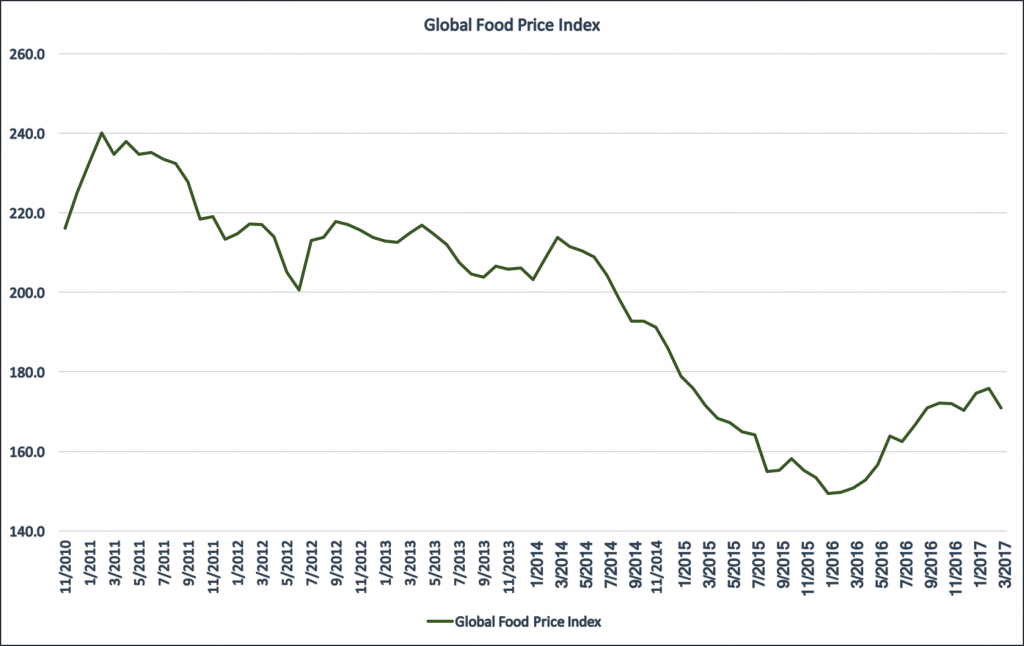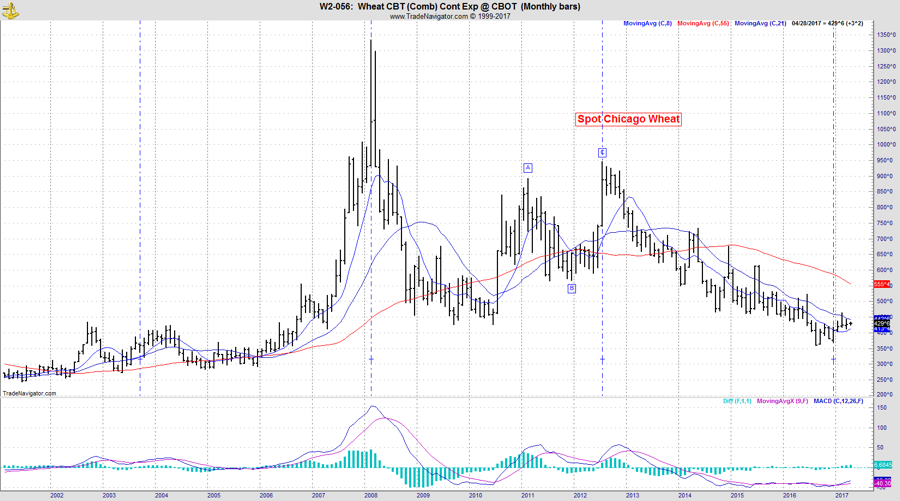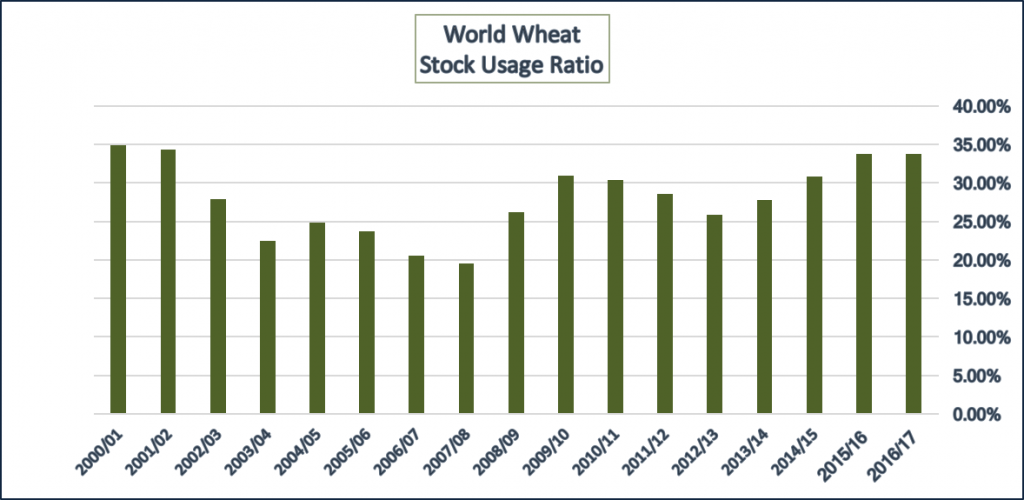By: Dan Hueber –
After rising for the first two months of 2017 and ten out of the past twelve months, global food prices slipped 2.8% during March, nearly erasing all the gains posted this year. Overall though, we remain 13% higher than we were a year ago and 14.5% above the extreme lows posted back in January of last year. The largest impact on the index came from declining sugar and vegetable oil markets with the meat price index the only category posting a gain. The FAO did note that global cereal production is forecast to drop slightly this coming year, (-2.7%) primarily due to the reduced wheat production in Australia, Canada and the United States. Recognize the expectations for a lower output is tried to reduced acreage, not because of any anticipated weather issues.

I was brought up in the school that believes the wheat market is really the true long-term trendsetter for grain prices as it is realistically a universal grain that can be produced just about anywhere and is used to feed both man and beast. Do note that the extreme (record high) in wheat was actually posted back in 2008, when a number of commodities recorded highs, and after a classic Elliot wave A,B,C correction into 2008, has really been the downside leader for the grain/soy markets ever since. One could argue if this means it has been a leader or a lager but I would suggest that until we have seen this markets’ fortunes begin to improve, we will not witness a sustained advance, particularly for the corn market. All that said, I believe that finally over the past six months, the wheat market is providing signs that this massive ship is beginning to change direction.

It is interesting to note that the FAO and the USDA are not seeing eye-to-eye at this time concerning global wheat production as the most recent estimates by Uncle Sam continue to project larger numbers. Be that as it may, even if they are correct with the ever-expanding demand, the USDA projects that the ending stocks to usage ratio will dip lower for the first time in the past four years, which is the first step needed before expecting to see a price recovery and again, this is under the assumption that there will be nothing out of the ordinary with production this year.

While there is nothing within this information that screams that we should be loading up on the long side of the wheat or other grain/soy markets just yet but I do believe these are additional building blocks that are creating the foundation from which these markets will rally. All we need now is the stimulus.
Last but not least today, it is Thursday which means weekly export sales which break down as follows; For the week ending March 30th, we sold 1,138,100 MT or 44.8 million bushels of corn. This was 59% above last week and 13% above the 4-week average. Top sales were to Mexico with 280.5k MT, followed by Colombia at 252.3k and Japan with 242.5k. For the marketing year, we have now sold 86% of the projected 2.225 billion with 22 weeks left in the year. Soybeans sales slipped 29% from last week but still registered a total of 482,000 MT or 17.7 million bushels. At the top if the list we find China with another 370.9k MT, followed by the Netherlands at 84.7k and rounding out the third spot is Indonesia with 66.5k. This was enough to take total sales for the year to a fraction above 100% of the projected 2.025 billion bushels. What will we do now with the other 22 weeks that are left? Wheat sales recovered well for the week as we sold 568,400 MT or 20.9 million bushels. This was 23% above the previous week and 48% above the 4-week average. Note as well that it matched the second highest weekly tally for the calendar year. The top sales went to unknown destinations with 134.4k MT, Taiwan at 98.2k and Algeria purchasing 92.3 MT. For the marketing year, we have now reached 96% of the projected 1.025 billion with 9 weeks left in the year. It would seem that the old adage that the best cure for low prices is lows prices continues to ring true.